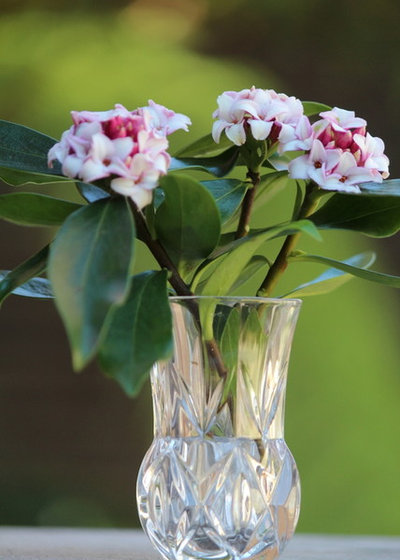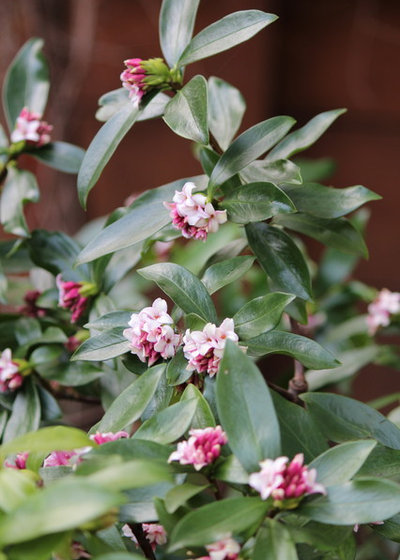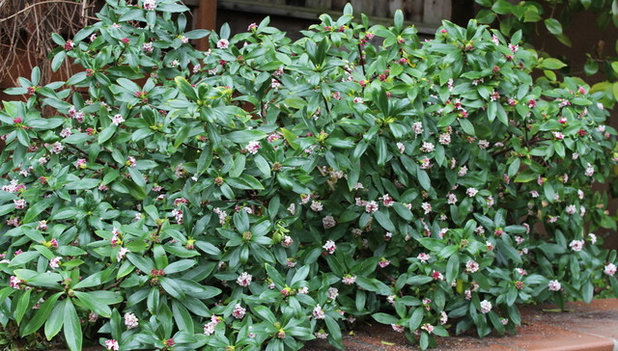As unmistakable and unforgettable as the smell of a leather baseball glove or Chanel No. 5, the first whiff of winter daphne lets you know that the seasons are changing and that it's always great to be in a garden — even on a chilly winter morning, when the scent of the tiny pink flowers seems even more powerful. The evergreen shrub is handsome, too. Many people would agree: If your climate allows it, do everything you can to grow daphne. Of course, there's a caveat: The plant is a total diva. And there's no sure way to keep it alive and healthy. But try anyway.
 Botanical name: Daphne odora Common name:
Botanical name: Daphne odora Common name: Winter daphne
Origin: Native to China and Japan
USDA zones: 7 to 9
Water requirement: Moderate; don't let the soil dry out
Light requirement: Partial shade, especially where there's midday sun
Mature size: 3 to 4 feet tall and wide, and larger
Benefits and tolerances: Small but potently fragrant flowers can fill a garden with scent; a few sprigs brought indoors will perfume a room. The lustrous-leafed shrub fits into many landscape situations. It's generally free of insect pests but is susceptible to often-mysterious root maladies, creating its reputation as an unpredictable malingerer.
Seasonal interest: Blooms in mid to late winter and early spring
When to plant: Plant container-grown plants almost any time of year, although spring and fall are generally the best times.
 Distinguishing traits.
Distinguishing traits. Daphne is a good-looking evergreen with dense foliage and shiny green leaves; 'Aureo-Marginata' is a popular variety with variegated leaves. Fragrant pink flowers appear in tight clusters at the branch tips.
Growing tips: Find a spot in partial shade where you can appreciate the sight and fragrance of the flowers. Amend the soil thoroughly with compost and don't bury the top of the root ball. Don't overwater in summer — this encourages soil diseases. If your plant dies, try another spot. Try it in a pot.
To control the shrub's size and shape, you can prune, or even shear back, a few inches after bloom. Cut bouquets of flowers liberally — this can be all the pruning needed to maintain bushy growth.
 How to use it.
How to use it. Squeeze in a single daphne shrub where people hang out or walk: near the back or front door, near a patio, at the edge of a shady border (make sure at least half a day of sun is available). Daphne looks good in a mixed border, in a raised bed and in a container. Or plant a group of three at a corner or curve in your garden. Shown here is the typical size and shape of a lightly pruned seven-year-old plant: 3 feet tall and 5 feet wide.





